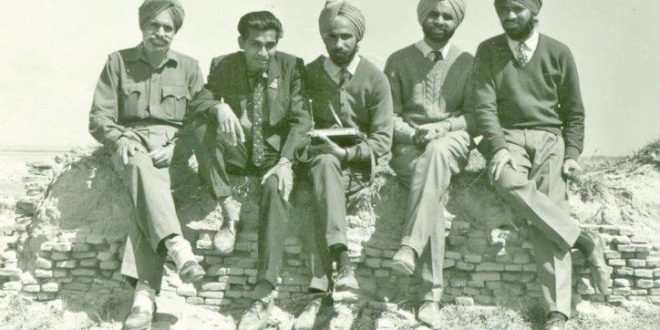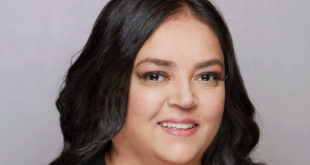 This remote town in British Columbia’s lumber country is named after its founder Mayo Singh from Paldi Village in the District Of Hoshiapur in Punjab
This remote town in British Columbia’s lumber country is named after its founder Mayo Singh from Paldi Village in the District Of Hoshiapur in Punjab
In most history books, the contributions of the Panjabis to the fabric of British Columbia’s culture and economy are not mentioned. One of the earliest towns for the early Punjabi settlers was Paldi, British Columbia and one of the pioneers who helped build the town was Mayo Singh. What follows is a description out of the book written by Mayo Singh’s daughter-in-law Joan Mayo to help preserve the local history.
Paldi is a name bound to evoke memories of the old days of early logging in British Columbia. Carved the bush in the middle of nowhere it was once a bustling community of 1500 hardworking pioneers of the logging and lumber industry.
The founder Mayo Singh arrived by ship at San Francisco in the year 1906. His older brother Ganea and cousin Doman Singh were in were in B.C. working for the Canadian Pacific Railway (CPR]. Eventually Ganea, Doman, Mayo and others prominent to this story made up the workforce at the Fernridge Lumber Company at Rosedale near Chilliwack. The East Indian men like the Chinese, lived in bunkhouses fending for themselves, as Canada’s racially discriminatory Immigration Laws forbade Asian women from entering the country. Mayo like the others worked awhile for the RR and then several sawmills in the interior of B.C. before joining the others at a sawmill in Rosedale.
In 1912 the Fernridge mill went broke. Mayo and 35 others continued living in the bunkhouses and eventually took over running the mill. In 1917 Mayo and partners sent for Kapoor Singh who was homesteading in Ontario. In return for his services as bookkeeper Kapoor was made an equal shareholder like the others . Each worker chipped in what little they could spare.
Again running out of a timber supply Mayo was sent to Vancouver Island to research timber supplies.
The site of the new mill was chosen because of its proximity to the railway and to Sahtlam Creek. The creek could be dammed to form a mill pond into which the logs could be dumped.
 Once the site was chosen construction began immediately. The operation of the mill was on an owner shareholder basis. Mayo was more involved in the business end of things. As the shareholders of the new mill were the same as the ones from before a bunkhouse and cookhouse for these men would have been top priority.
Once the site was chosen construction began immediately. The operation of the mill was on an owner shareholder basis. Mayo was more involved in the business end of things. As the shareholders of the new mill were the same as the ones from before a bunkhouse and cookhouse for these men would have been top priority.
Soon the community was of mixed ethnic peoples. The Japanese construction workers, the Chinese on the railway and the East Indians and Whites in the mill.
Quoting Dharm Singh Parmar a relative of Mayo’s who came to work in the office. “Coming to Paldi was like coming to a city. It was so bright. The electric light in India seemed dimmer in comparison. I was amazed at how bright it was in Paldi and was excited to be in this fascinating place.”
Wherever there are five or more Sikh’s there will be Sikh Temple even just a spare room in some ones house. Therefore it was only that once the natural that once the mill and bunkhouses were erected the next building should be a Temple. The first official Temple in Paldi was built in 1919. On the same spot where the present Temple is located.
The community soon took on the atmosphere of a village in Punjab with the Sikh Temple in the center. It becomes a home away from home in a foreign country. This was particularly comforting to those who spoke little English.
With the arrival of several women from India the community really sprang to life. The village of Paldi became a unique cultural mixture of East Indian, Japanese, Chinese and Whites. All spoke a form of broken English started first by the men in the workforce and continued by the children who knew only the language of their parents.
By 1928 a camp had sprung up on Hill 60 near the logging operation. Twenty men were living there with Doman Singh in charge.
Paldi Jor Mallas
Many are the stories of Paldi Jor mallas. The East Indian men from Paldi and other Temples in B.C. competed in high jump and broad jump but the most exciting event was the weight lifting. Sometimes it was a heavy piece of iron with a prize to the one who could raise it and lower it the most times. Other times it was a large boulder. Some remember the wrestling ring Mayo set up in his front yard. There was Indian stick fighting, shot put and races. Also games of racing, volley ball and kabudhi. Prizes for the men were usually handkerchiefs and ties and for the women and children ice cream and fruit.
Meetow Singh, at the time of the writing of the book, the president of the Paldi temple, recalls as a child, the week before the Jor
Malla all the school children made flags from coloured construction paper then strung them between the Temple, cookhouse and bunkhouses. Using twine from the mill the type used to tie bundles of 1×4″s.
He also remembers anyone able to play a musical instrument being given time off from the mill every time a bus load of devoties arrived. The band would meet the bus beside the company office and escort the passengers to the Temple where everyone gave thanks.
Eventually delivery trucks brought supplies door to door. The Buckerfield truck brought feed for the animals and flour for the Roti. A Japanese man from Chemainus brought fresh fish and a white man from Duncan from Duncan brought meat. The Chinese fruit and vegetable truck came twice a week and a bread truck from Cobble Hill brought bread.
Another memory of Dharm Singh
In those days when the mill was running there wer so many families it was a wonderful place to be, children playing, women visiting back and forth and in the evenings all the lights on you could hear the women singing and dancing. The village style of singing and dancing in the evening always played an important role in the lives of the East Indian women.
In 1959 the old Temple was torn down and a new one built on the same site making it the oldest Sikh Temple in the same location. In fact on the same spot and the same direction. The building was enlarged again in 1978 and in 1983.
This has been reproduced with permission from Joan Mayo. If you would like to read further, please go to the Cowichan Valley Museum, Volume One Books in Duncan or the Paldi Gurdwara and find 50 YEARS IN THE LIFE OF A VANCOUVER ISLAND LOGGING TOWN. You will find amazing stories about Paldi.
 Desi Today Magazine
Desi Today Magazine





send me more detail
This article brought a lot of memories. In the late 1960s I was a student at Nangal Kalan high school which was situated about in the middle of my village, Sarhala Kalan and Paldi. I used to walk everyday with other boys and girls from Sarhala Kalan to Nangal Kalan, a distance of about 2 miles, to attend the school. Then occasionally we went to Paldi to run errands for the teachers. That practice was normal those days. We rode bikes to Paldi and rode right by the Mayo Hospital. We had heard that someone from Canada donated funds to have that hospital built. And now I know who must that have been and how significant that is. Paldi high school was the center for annual exams given by the Punjab School Education Board for the eighth and tenth grades. I went to Paldi High School to take both of those exams. Also Paldi was the nearest village for surrounding villages including mine from where people could catch a bus to Phagwara or Jalandhar. I remember dropping off relatives at that bus stand few times.
I was born in Paldi in 1937: The picture of the students show three of my aunts. The girls on the right front are my aunt Barbara Kanye, Jane Masaye, and behind them, Marge Moritsugu. Barbara Hagino lives in Toronto. Jane Uyesugi lives in Nikki Home in Vancouver. Marge Kato lived in Vancouver and then Williams Lake. Unfortunately, she just passed away a few months ago. Their older sister, Hisaye Niiya lives in Toronto. She will soon celebrate her 99th birthday. We, my mom and I visited Palii several years back. We did talk with some folks at the temple. I hope to visit again in the next couple of years, health permitting. My grandparents, Yonemura are buried in the cemetery just north of Duncan.
Vic. Nobby Ogura was born there as well. He has passed away, but his children are friends with mine and three live in the .montreal area.